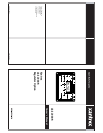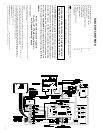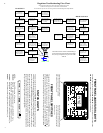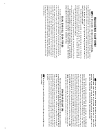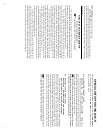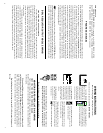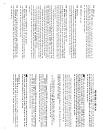
10
TERMINAL #1
BLACK WIRE (AGND) is the Analog Ground. It is the reference for all
measurements. It must be connected on the BSHG (Grounded) side of the battery shunt.
The BSHG side of the shunt is the side
opposite of the negative battery terminals. It must
have a good connection to one of the two #10 screws on the top of the battery shunt.
Do not connect anything else to this terminal.
TERMINAL #2 is not used.
TERMINAL #3
WHITE WIRE (LITE) turns on the monitor backlighting. It may be supplied from
a switch that controls other instrument lighting or it may be connected to TERMINAL #4
if you wish the lighting to be on all the time. Set at the default value the backlighting consumes
about 8 mA (0.008 A). If left on all the time it would use less than 0.2 Ah per day.
TERMINAL #4 <<Consider the options for this wire>>
RED WIRE (12 / 24 V) is the +12 V / 24 V power to supply the meter. The wiring
diagram shows two options. The
preferred option is to jumper together TERMINALS
#4 and TERMINAL #5 as shown. Wired this way, the meter cannot accidentally be
de-powered. It has the disadvantage of always consuming a little bit of power from the
#1 Battery. The meter consumes about 28 mA (0.028 A). If left on all the time it would use
about 0.7 Ah per day.
If the system is left on for long periods (long enough to significantly discharge the
battery) with no charging sources available, then you should consider the option shown with
the dotted line. In this case the TERMINAL #4 RED WIRE is
not jumped to the
TERMINAL #5 BLUE WIRE but supplied from the common of the battery switch. (Be
sure to install the 2 A fuse as near the battery switch as possible.) Then, whichever battery
is selected by the battery switch is the battery that supplies the power for the meter.
Caution: With this option, if the battery switch is turned off, the meter is de-powered
and this resets amp hours to zero. Therefore the battery switch should never be turned off
except when leaving the system for a long period of time. When the system is returned to
service you must resynchronize the meter by fully charging the battery.
Another option for the TERMINAL #4 RED WIRE is to install a separate on/off
switch in it before it connects to the terminal board. Just remember to turn off the meter
when leaving the system unattended. (Amp hours will be reset to zero when the unit is
repowered.)
TERMINAL #5 <<See TERMINAL #4 above for options>>
BLUE WIRE (B1V) supplies Battery #1 voltage to the Link 2000-R for sensing.
It should be supplied directly from Battery #1 positive. Be sure to install the 2-amp fuse
shown in the drawing as near the battery as possible.
TERMINAL #6 <<if one battery to be monitored, jumper TERMINAL #5 & #6>>
VIOLET WIRE (B2V) supplies Battery #2 voltage to the Link 2000-R for sensing.
It should be supplied directly from Battery #2 positive. Be sure to install the 2-amp fuse
shown in the drawing.
11
PROGRESS CHECK #1
The wires hooked up so far allow you to check the voltage monitoring functions. Install
the fuse that supplies TERMINAL #4 - Red Wire (+12 V / +24 V) and carefully plug
the ribbon cable into the Monitor Terminal Board, note the connector index key
and be sure the pins are lined up correctly.
From now on you may de-power the meter by unplugging the ribbon cable.
If you remove the fuse that supplies TERMINAL #4 - RED WIRE with the ribbon
cable plugged in, you must be careful when reinstalling it. It must be a deliberate
action. If the power to the meter is turned on and off in less than five-second intervals
it can cause the microprocessor to interrupt its initialization process. De-powering
and re-powering by using the ribbon cable avoids this problem.
Check each of the battery voltages. It is best to have a separate, accurate digital
voltmeter to compare the voltages shown on the Link 2000-R against the actual battery
voltage. They should be within a few hundredths of a volt. If they are not, check your
voltage sense lead fuses and fuse holders.
Any problems must be resolved before
proceeding. If you have questions, call your dealer or Xantrex Technology Inc.
Unplug the ribbon cable before proceeding, or remove the fuses in the wires to
terminals #4, 5, & 6 before continuing.
<<The next four wires are for the dual battery shunt sense leads.>>
See "Required Reading" in the LINK 2000 installation manual regarding the special
care required in the installation of the shunt and its wiring.
TERMINAL #7 - Jumper to TERMINAL #9 for single bank current measurement.
GREEN WIRE (B1SHG) which is connected to the SMALL SCREW ON THE
GROUND SIDE, OR LOAD SIDE, of the Battery #1 shunt (B1SHG). This wire must be
located exactly as described to ensure accuracy of current measurements. This GREEN
WIRE AND ORANGE WIRE attached to Terminal #8 should be a twisted pair.
TERMINAL #8 - Jumper to TERMINAL #10 for single bank current measurement.
ORANGE WIRE (B1SHB) is connected to the SMALL SCREW ON THE
BATTERY SIDE of the battery #1 shunt (B1SHB). This wire should be located exactly
as described to ensure accuracy in current measurements.
NOTE: If only one current input is used, jumper terminals #7 & #9 together
and terminals #8 & #10 together. This hookup will display the same current
information for both the Battery #1 and #2 selection.
TERMINAL #9
BROWN WIRE (B2SHG) is connected to the SMALL SCREW ON THE
GROUNDED, OR LOAD SIDE, of the battery #2 shunt (B2SHG). The TERMINAL #10
YELLOW WIRE and TERMINAL #9 BROWN WIRE should be a twisted pair.



